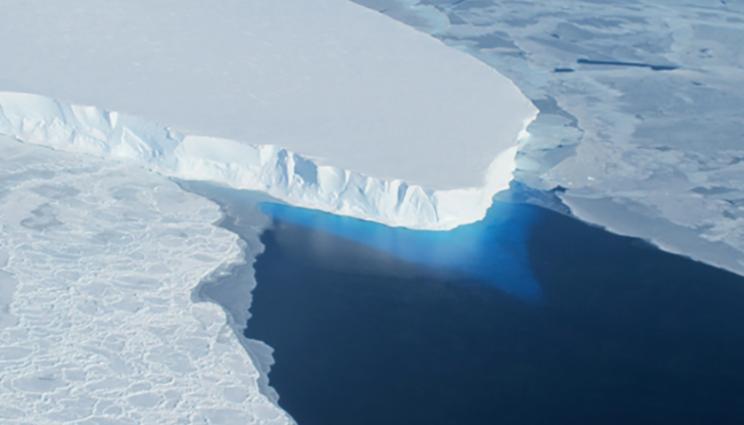
Grey Glacier in the Southern Patagonian Ice Field, just west of the Cordillera del Paine in Chile. New research confirms the timing of tropical glacier melt at the end of the last ice age, 20,000 years ago.
Tropical glaciers in Africa and South America began their retreat simultaneously at the end of the last ice age about 20,000 years ago, according to a recent study by a multi-institutional research team that includes Lawrence Livermore National Laboratory's (LLNL) Susan Zimmerman.
The finding of synchrony in ice retreat across the global tropics clarifies how the low latitudes transformed during one of Earth's most extreme climate-change events and can help current-day predictions of the planet's climate future.
According to the study, glaciers in the tropics of Africa and South America reached their maximum extents between 29,000 and 21,000 years ago and then began to melt. This retreat is earlier than the significant rise in atmospheric carbon dioxide recorded at about 18,200 years ago. The findings demonstrate a trend of increasing temperatures across the tropics and suggest that the warming may have been caused by a reduction in the temperature differences between the Earth's polar regions and the tropics.
The study, published in Science Advances, supports the overwhelming scientific consensus on the role of carbon dioxide in causing global climate change, but adds additional levels of complexity to the understanding of Earth's climate system and how ice ages rapidly end. The result also adds to the understanding of the sequencing of glacial retreat between the tropics and the polar regions at the time.
"The tropics are an ideal region to investigate the impact of global forcings on glacial-interglacial temperature change, as they are far from the direct forcing from high-latitude insolation and large ice sheets," Zimmerman said. "Tropical glaciers provide a valuable record of past change in the low latitudes, as these glaciers are highly sensitive to changes in temperature, and their past fluctuations reflect changes in mid-tropospheric temperature."
Prior work using cosmogenic beryllium-10 (10Be) surface-exposure dating and analyses of glacially influenced lake sediments indicates that some tropical glaciers in South America achieved their last glacial maximum (LGM) extents either before or early during the last ice age (LGM = 26,500 and 19,000 years ago) and that deglaciation from the last ice age was underway at 20,000 years ago, before the rapid CO2 rise at 18,200 years ago.
To assess the timing of glacial fluctuations across the tropics during the LGM, the team determined a chronology of past glacial extents using 10Be dating of moraines in tropical East Africa, far from the South American tropics. The 10Be chronology includes 17 new and eight previously published ages that constrain the timing of glacial fluctuations in the equatorial Rwenzori Mountains, located on the border between Uganda and the Democratic Republic of the Congo, during the LGM and the onset of deglaciation.The team also recalculated 177 10Be ages of 48 LGM moraines in tropical South America from 10 prior studies (nine sites).
Existing research using 10Be surface-exposure dating on deposits left by tropical glaciers during the last ice age is constrained to Africa and South America. Future work aims to determine whether sites in other regions can add to the understanding of global climate change.
The work is funded by the National Science Foundation, the National Geographic Society and the Comer Family Foundation. Other institutions include Dartmouth College, Brown University, Bates College and Makerere University.






